Introduction
Ever wondered how to steer your customers to the perfect sock with ease? It starts with understanding the difference between wool and cotton socks—a choice that can make or break their shopping experience. For brands and retailers, this isn’t just about fabric; it’s about unlocking insights on performance, comfort, and sustainability. Wool brings warmth and durability, while cotton delivers breathability and value. In this guide, we’ll break it all down so you can help consumers shop quickly and confidently. And even help you make informed decisions about your inventory and better meet your customers’ needs. As a foreign trade factory, we’re here to equip you with the knowledge to solve customer needs and explore custom sock solutions that elevate your brand.
Wool is superior for most conditions as it wicks moisture, keeping feet dry and regulating temperature to stay warm in the cold and cool in the heat. Cotton acts like a sponge, absorbing sweat, which can lead to blisters and cold, clammy feet, making it unsuitable for active use.
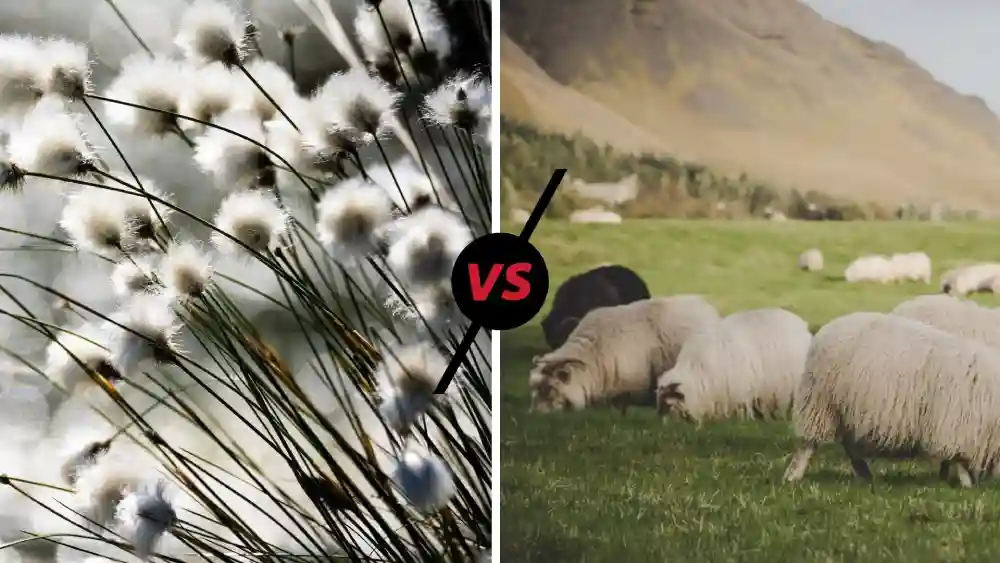
Performance Insights: Wool Sock and Cotton Socks
For brands and retailers, understanding how wool and cotton socks perform is key to meeting customer needs and driving sales. Here’s a concise look at their strengths and trade-offs.
Merino Wool Socks: Premium Features, Premium Margins
Merino wool socks excel with standout breathability and moisture control, keeping feet dry across climates. Wool’s unique fibers pull sweat away fast—ideal for outdoor sports—while staying warm in cold weather and cool during exertion. Their anti-odor power shines too: a New Zealand study shows the intensity of body odor from wool fabrics was 66% lower than polyester and 28% lower than cotton, thanks to natural lanolin that fights bacteria. Wool socks are a premium choice for lasting freshness and comfort.
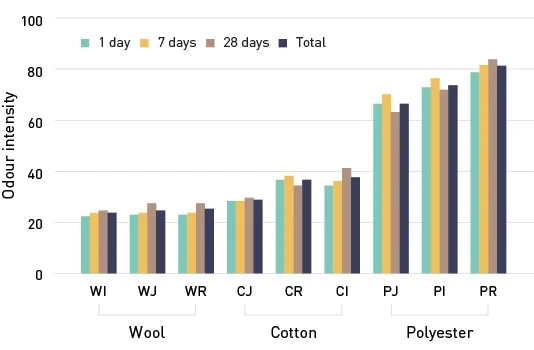
Cotton Socks: Everyday Reliability for Mass Appeal
Cotton socks offer solid breathability and a soft feel, perfect for warm, casual days. They soak up moisture but dry slowly, lacking wool’s wicking edge, which can leave feet damp. Without anti-odor properties, cotton socks suit lighter, everyday use where affordability drives sales.
Comfort Factors: Choosing Wool Socks vs Cotton Socks
Comfort drives sock choice. Below, we break down their standout features and share real-world reactions to help retailers match customers with the perfect pair.
Merino Wool Socks: Warmth and Dryness Customers Love
Merino wool socks excel with natural temperature control, keeping feet cozy in cold and cool during exertion. Wool’s fine fibers trap heat—studies show they can raise foot temperature by 3-5°C at -10°C, outperforming coarser wool—while wicking moisture to ensure dryness on long outdoor treks. This adaptability, plus a soft lining, makes wool socks a top pick for sports and variable climates.

Cotton Socks: Lightweight Comfort for Everyday Wear
Cotton socks shine with airy softness, ideal for warm days and casual use. They offer a gentle feel that’s easy on the skin, though they lack wool’s warmth or sweat management. Customers choose cotton socks for relaxed settings where lightweight comfort matters most.
Durability Insights: Building a Loyal Customer Base
Durability is more than just a product trait—it’s a powerful factor in fostering customer loyalty, encouraging repeat purchases, and shaping retailer strategies. For brands and retailers, understanding how the durability of merino wool and cotton socks influences customer behavior can inform smart inventory choices that enhance satisfaction.
Merino Wool Socks: Long-Lasting Quality Worth the Price
Merino wool socks excel in toughness, thanks to wool’s elastic fibers that snap back after stretching, resisting wear and deformation. Unlike coarser wool, merino’s fine structure endures intense use—like outdoor sports—extending sock life even after frequent washes. This resilience makes wool socks a top pick for quality-focused buyers, fostering trust and encouraging return purchases.
Cotton Socks: Affordable but Faster Wear-Out
Cotton socks offer budget-friendly comfort but lack staying power. Their fibers break down quicker under regular use, needing replacement sooner. This short lifespan suits cost-conscious shoppers, driving frequent restocks and steady sales volume for retailers.
Cost Implications: Balancing Production and Profit
Wool socks, with higher production costs, justify premium pricing through lasting value, cutting return rates. Cotton socks, cheaper to make, thrive on high turnover. Stock wool socks for durability seekers and cotton socks for value-driven markets to build loyalty and optimize revenue.
Environmental Protection: Sustainability as a Selling Point
Sustainability isn’t just a trend—it’s a decisive factor for today’s consumers, even when choosing something as everyday as socks. For retailers and brands, understanding the environmental impact of merino wool socks and cotton socks offers a unique opportunity to align with eco-friendly values, attract green-minded shoppers, and stand out in a crowded market.
Merino Wool Socks: Eco-Friendly Credentials
Merino wool socks excel as a green choice—renewable, biodegradable, and less water-intensive than cotton. Demand for natural textiles like wool is growing, especially in eco-focused markets like the Nordics, where sustainable textile sales rose 8% annually (Nordic Council, 2025). Certifications like OEKO-TEX and Woolmark prove your wool socks are responsibly sourced, a move brands like Patagonia use to win eco-conscious buyers.
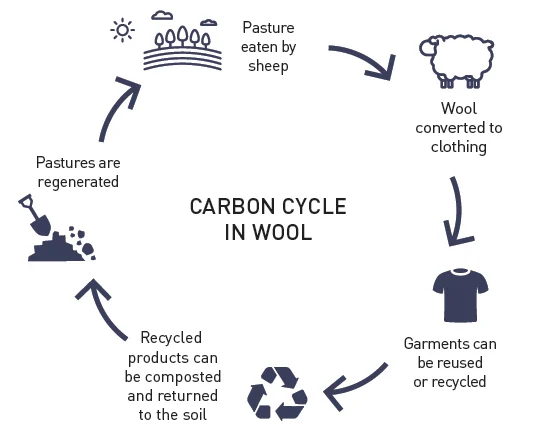
Cotton Socks: The Environmental Cost of Conventional Farming
Cotton socks from traditional farming rely on heavy water use—up to 2,700 liters per shirt’s worth of cotton (World Resources Institute)—and pesticides that harm ecosystems. Organic cotton socks offer a cleaner option, appealing to shoppers who prioritize sustainability over conventional fibers’ annual renewability.
Green Demand: Tapping into Eco-Conscious Trends
Eco-friendly socks are a smart play. A 2023 Nielsen study found 66% of global consumers will pay more for sustainable goods. Stock certified wool socks or organic cotton socks to meet this demand, blending performance with planet-friendly appeal. Partner with our factory for standout designs that lead in eco-textiles.
Seasonal Sock Trends: Regional Demand for Wool and Cotton
Understanding how geography and climate shape sock preferences is key to stocking the right products at the right time. From the icy winters of the north to the year-round warmth of equatorial zones, customer needs vary dramatically. Here’s how retailers can align their inventory with these seasonal and regional trends to maximize sales and satisfaction.
Northern Markets: Winter Wool Dominance & Summer Cotton Niches
In northern markets, sock demand shifts sharply with the seasons. During the long, frigid winters—especially in regions like Scandinavia—wool socks are essential. Their natural insulation keeps feet warm in freezing temperatures, making them a top seller from late fall through early spring. Retailers should stock a variety of wool socks, from thick, thermal options for extreme cold to lighter merino blends for milder days. As summer arrives, the warmer months create a niche for cotton socks, prized for their breathability and lightness. In Mediterranean areas, where winters are milder, wool socks still have their place but face less intense demand. Here, cotton socks shine year-round, offering comfort in the region’s temperate climate.
Geographic Stocking Strategies:
- Scandinavia: Prioritize wool socks in winter, with a smaller selection of cotton socks for summer. Promote thermal styles as must-haves for harsh cold.
- Mediterranean: Balance inventory with cotton socks as the staple, supplemented by wool options for cooler months. Highlight breathability for year-round appeal.

Equatorial Zones: Year-Round Cotton Socks with Wool Exceptions
In equatorial zones, the story changes with the consistent heat. Here, cotton socks are the default choice year-round, thanks to their airy feel and affordability. Retailers should stock a wide range of cotton socks, from basic everyday styles to those with features like arch support or moisture-wicking tech. However, there’s a growing exception: outdoor enthusiasts. Hikers, campers, and adventure seekers often prefer wool socks for their durability and sweat management, even in warm climates. To capture this niche, retailers can offer hybrid wool-cotton blends that combine wool’s performance with cotton’s comfort—perfect for customers who need gear that handles both the climate and their active lifestyles.
Targeting Outdoor Enthusiasts:
- Stock hybrid blends or lightweight wool socks to appeal to adventure-driven buyers.
- Market these as ideal for hiking, camping, or any activity where performance matters, emphasizing durability and moisture control.
Stocking Strategies: How to Optimize Inventory Year-Round
Seasonal Transitions
For retailers, timing is crucial when stocking wool and cotton socks. Late summer, around August, is a strategic time to ramp up orders for wool socks, ensuring they’re ready by early autumn (September) to capture pre-winter demand, especially in colder regions. This aligns with when customers start seeking warmth for upcoming chilly weather. For cotton socks, late winter (February or March) is ideal for ordering, with promotions kicking off as spring begins (March or April), catering to the need for lightweight, breathable options as temperatures rise.
Customization Trends
Customization is gaining traction, particularly with wool socks, due to their growing popularity for both style and function. Blended wool-cotton socks are a hit for transitional seasons like spring and fall, offering a balance of warmth and breathability. Partnering with factories, such as foreign trade factories, allows retailers to craft exclusive sock designs—think unique patterns or specialized blends—helping brands stand out and meet diverse customer needs.
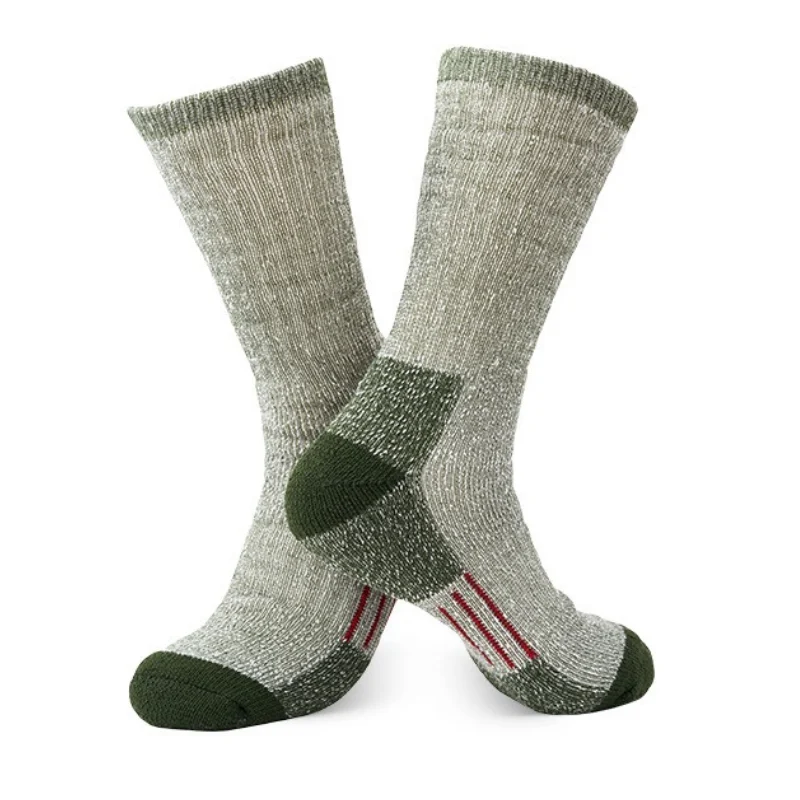
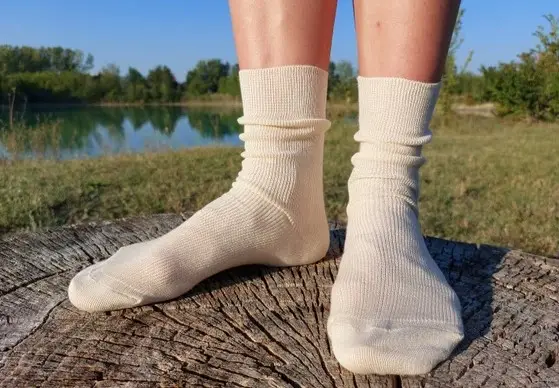
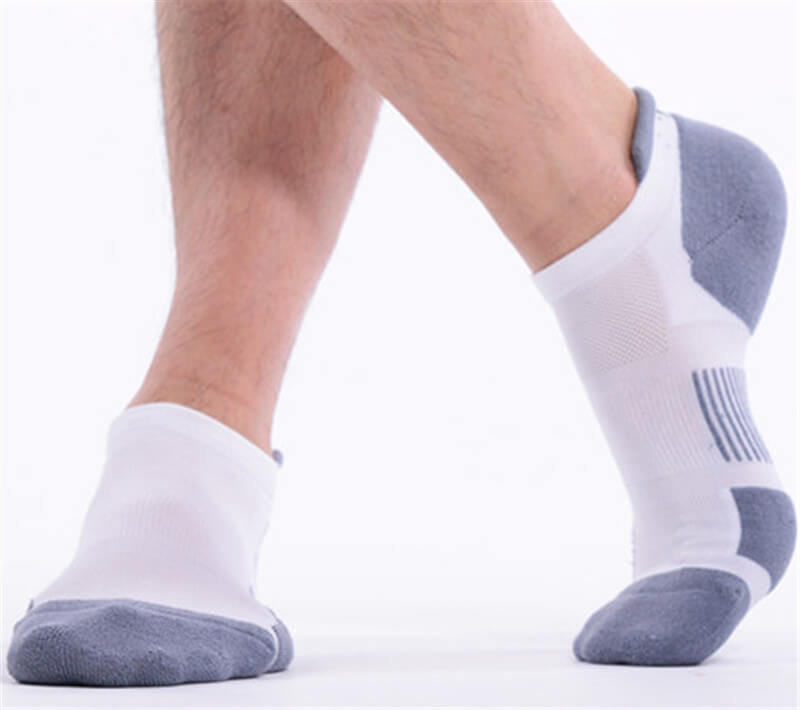
Conclusion: Your Retail Roadmap for Wool vs Cotton Socks
Wool socks bring warmth, durability, and moisture-wicking benefits, making them a must-have for cold weather or active lifestyles. Meanwhile, cotton socks deliver breathability, softness, and cost-effectiveness, perfect for warmer climates and everyday wear. Learning these differences can help your customers find the right socks faster and improve customer satisfaction.
As a foreign trade factory specializing in sock production, we offer brands and retailers like you the chance to create tailored solutions—whether it’s blending wool and cotton for versatile all-season socks, designing unique patterns that reflect your brand, or addressing specific customer pain points with innovative features. Our expertise ensures your socks not only meet market trends but also exceed end-customer expectations.
FAQs
1. For general daily wear, which sock material is better?
For casual, dry conditions, lightweight cotton is comfortable and breathable. However, Merino wool is a superior all-around choice. It adapts to changing temperatures, manages moisture if your feet sweat, and resists odor, making it ideal for transitioning from the office to the outdoors without needing to change your socks.
2. Which material is best for sweaty feet, and why?
Merino wool is the clear winner for sweaty feet. It excels at wicking, pulling moisture away from the skin to keep you dry. Cotton does the opposite—it acts like a sponge, absorbing sweat and holding it against your foot, which can lead to blisters, discomfort, and feeling cold.
3. Are wool socks only good for cold weather?
No, that’s a common myth! Quality Merino wool is a fantastic temperature regulator. Its natural crimp creates air pockets that insulate in the cold, but its breathability and moisture-wicking properties also keep your feet cool and dry in the summer. Cotton, however, can become damp and clammy in the heat.
4. Should I look for socks that are 100% cotton or 100% wool?
You should generally avoid 100% cotton socks for anything beyond light casual wear, as they trap moisture. While 100% Merino wool socks are excellent, many of the best performance socks are actually wool blends, adding synthetics like nylon for durability and spandex for a better, stretchier fit.
5. Are there any downsides to choosing wool socks over cotton?
The two main considerations are cost and potential sensitivity. High-performance wool socks are typically more expensive than basic cotton ones. While some people find lower-grade wool to be itchy, modern, high-quality Merino wool is incredibly soft and fine, making this a non-issue for the vast majority of wearers.
